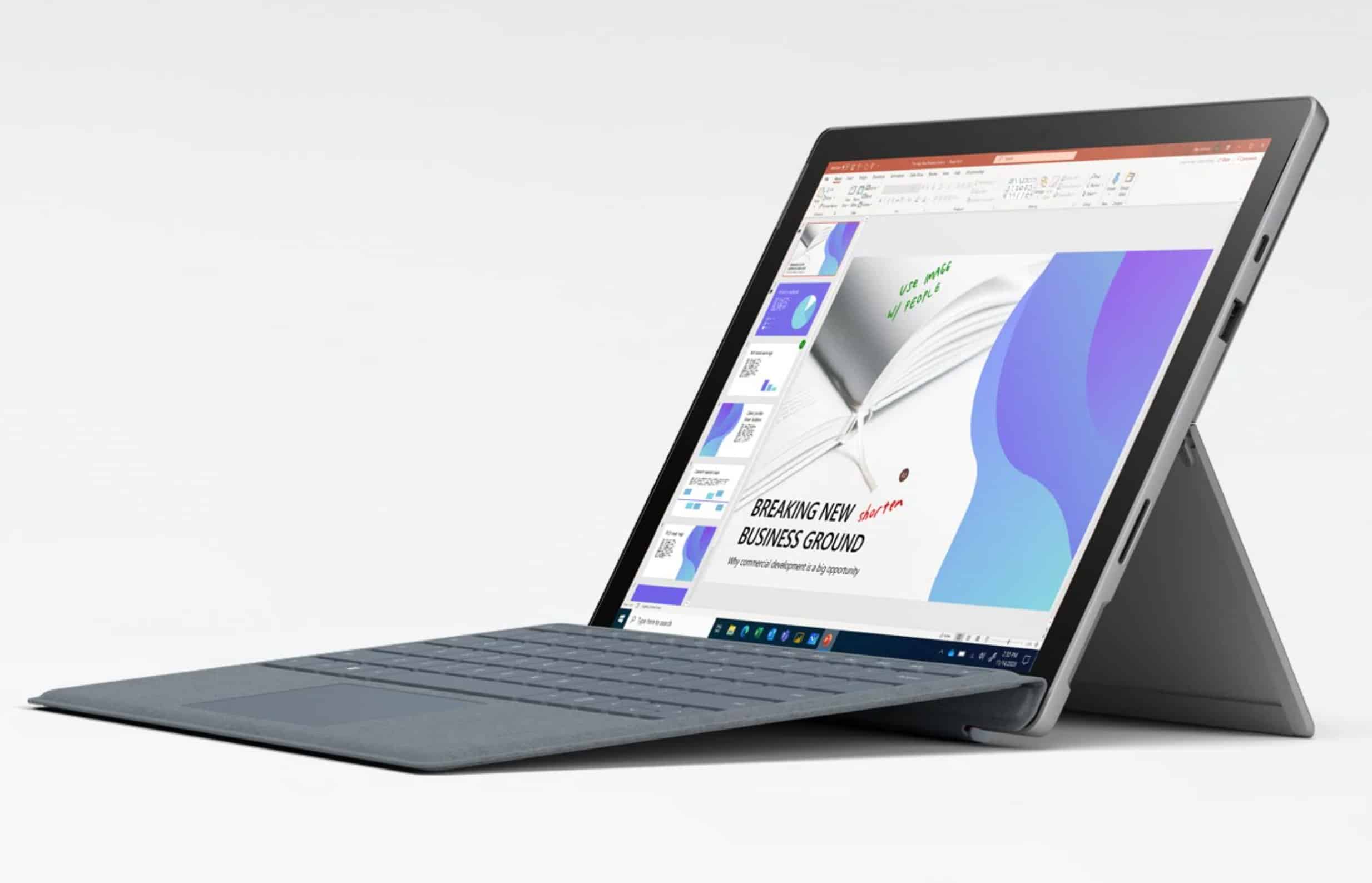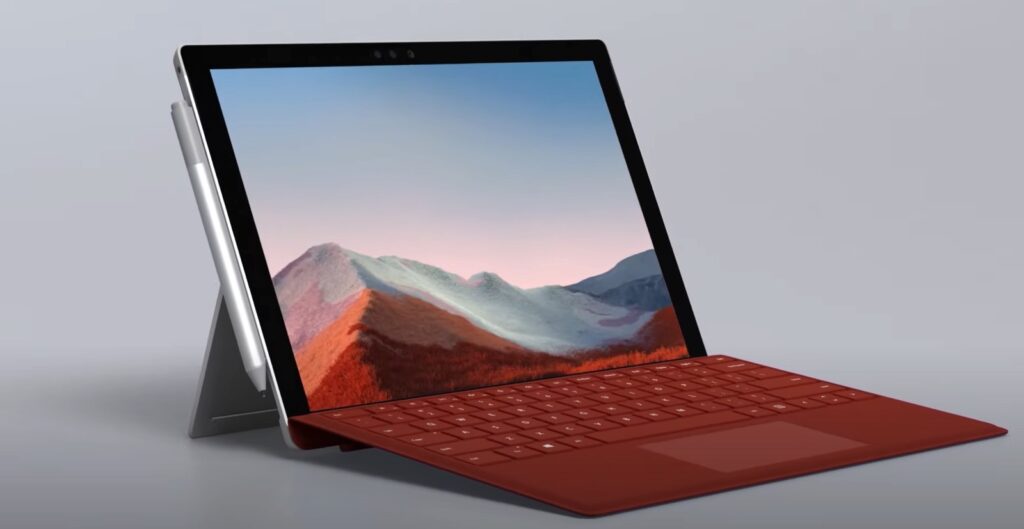

Somewhat ironically, the new Tiger Lake processors theoretically offer the new Thunderbolt 4 port option. It appears that the Surface Pro 7+ speakers have been upgraded to use Dolby Atmos audio technology, which has also been used on the Apple iPad Pro and Amazon Fire HD 10. The 5MP user-facing camera and an 8MP rear camera both capture 1080p video, and a pair of far-field mics to pick up your voice. The new emphasis on videoconferencing has turned the high-resolution cameras built into the Surface Pro 7 and the new 7+ from luxuries to essentials. Users are now accustomed to “camera to camera is the new face to face,” added Robin Seller, the corporate vice president of Microsoft Devices, in a blog post. The Surface Pro 7 adds an SSD drawer, and the ability to swap out the SSD inside. A change no one will mind: Mircosoft has retired the 4GB RAM option, offering 8GB, 16GB, and a new 32GB LPDDR4x memory option. Internally, users will have a choice of buying versions of the Surface Pro 7+ with either a dual-core Core i3-1115G4 processor, or two quad-core options: the Core i5-1135G7 and the Core i7-1165G7. For one, Microsoft said that customers have been forced to move around their homes unexpectedly, and work from odd setups the unexpected demands of Zoom/Teams calls, downloads, and other loads on a home wireless network has made offloading the wireless data burden to a cellular network a convenience, if not a priority. Microsoft positioned the design of the Surface Pro 7+ as at least a partial response to the pandemic, which has forced many of its customers to work from home and adapt to what you might call extraordinary working conditions.

Microsoft’s Surface Pro 7+ is almost physically indistinguishable from its predecessor, the Surface Pro 7. (Unfortunately, 5G isn’t yet included.) The only apparent physical changes is the SSD drawer. With the Surface Pro 7+, Microsoft is not only upgrading the internal components, but adding the LTE option off the bat, something that it hasn’t always done.

The Surface Pro 7+ name is appropriate, as the Surface Pro 7 included Intel’s 10th-gen Ice Lake processors but was otherwise just a spec bump from its predecessor.


 0 kommentar(er)
0 kommentar(er)
